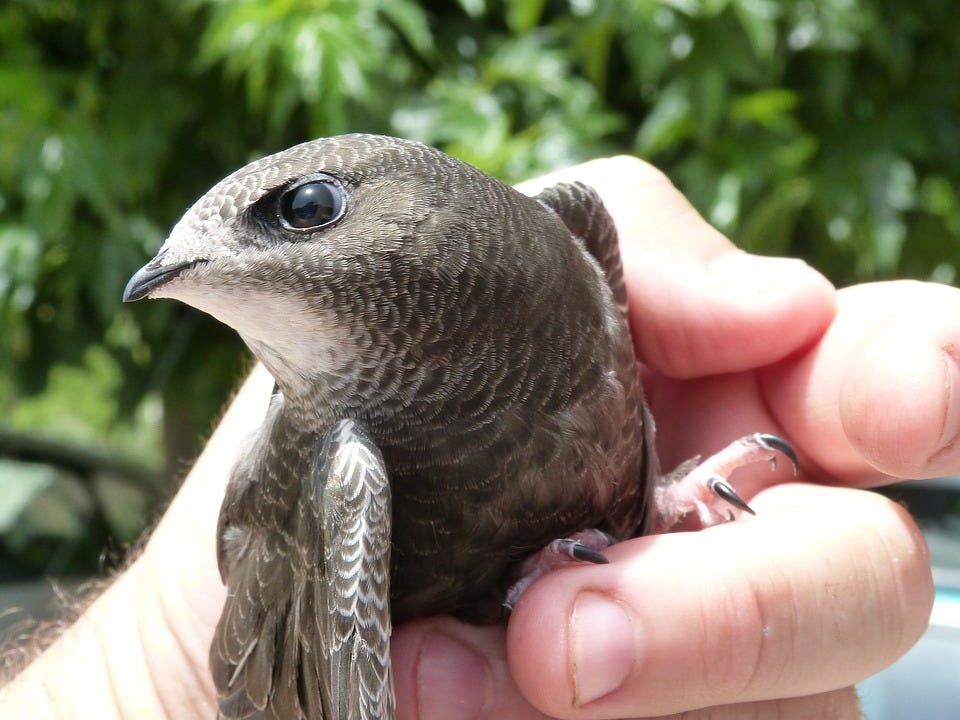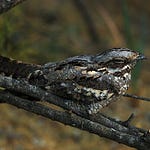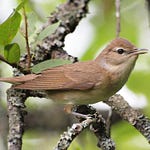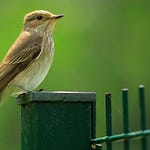For many of us the most welcome sound we’re likely to hear over an urban street will be the high-flying squeal of the swift.
Swifts are among the latest of our summer birds to return, with just a few pioneering individuals recorded before late April, and many not arriving until well into May.
We may well hear their distinctive screams before we see them, high over our rooftops or racing at chimney-height along the streets.
More than perhaps any other bird, swifts are truly creatures of the air. They spend the great majority of their days (and nights) on the wing, landing only to raise young.
Indeed their Latin name ‘apus’ means ‘without feet’, which is inaccurate but an understandable mistake, given that their tiny landing gear are hardly ever on show.
Early in the season it’s the adults that can be heard and seen, often in groups, reclaiming their streets and skies.
Later on, in July, they are joined by their scalier-looking offspring for practice laps and feeding sorties, again shrieking away as they tour the neighbourhood.
Unlike the similarly aerodynamic swallows and martins, they raise only one brood, and are among the earliest of our birds to head back south.
Swifts have undergone one of the sharpest recent declines of any of our birds. More than half disappeared between 1995 and 2016.
One of the reasons appears to be a lack of suitable breeding sites, as their favoured eaves and roof cavities are lost to renovations.
One solution to this may be the way we build houses.
While there’s nothing brick-like about a swift, the placement of hollow ‘swift bricks’ set high into the walls of new homes could create many new places to nest.
And not just for swifts, but for house sparrows, starlings and other species struggling to make a home in neighbourhoods that have become a little too tidy.
The common swift winters in central and southern Africa, and breeds from Ireland in the West to India and Eastern Siberia in the East.
As I write, it’s still empty in the Cambridge Conservation Initiative swift box. But they could be back any day now. Eyes to the live cam. 👇
This is the 18th instalment in 2025’s cycle of Shriek of the Week. You can catch up with Robin - which includes details of the plan for this year - as well as Wren, Song Thrush, Blackbird, Great Tit, Dunnock, Chaffinch, Goldcrest, Nuthatch, Chiffchaff, Skylark, Great Spotted Woodpecker, Blackcap, Starling, Willow Warbler, Nightingale and Whitethroat.
For those who can, subscribing to the paid tier of Shriek of the Week supports me to write more and keep this all going.
It also gets you access to the full A-Z archive of Shriek of the Week AND our livestream-hopping Early Bird Club call - the next is 8am BST (GMT +1) on Saturday 7 June.
Thank you to Vanda, Ana, Susie and Clare for your recent support. 🦜
Read of the Week
In the Garden of his Imagination
When I go slower I hear more and see more. It may take a little longer to ‘get my steps in’ but I do not ignore that flash of feathers, that whirrrr of wings, that tentative snippet of song or chatter. What sort of fool would keep pushing for maximum aerobic output at the expense of seeing, hearing, interacting…
with a feathered poem?
I suppose we all go to the woods for our own reasons.
Whether he’s sharing exceptional photography, wild stories from his youth or contemporary encounters with nature and mortality, David E. Perry transports me every time.
Media credits:
Thanks to Lawrence Shove & British Library for the audio, and to makamuki0 for the image of a young swift.
🐦⬛ Are you a creative or communicator working for climate, nature recovery or community resilience?
Find the others. Join 249 of us at Content Rising, a gathering at the Millennium Seed Bank, Kew Wakehurst in Sussex, on 12 June.
















Share this post